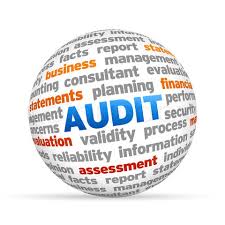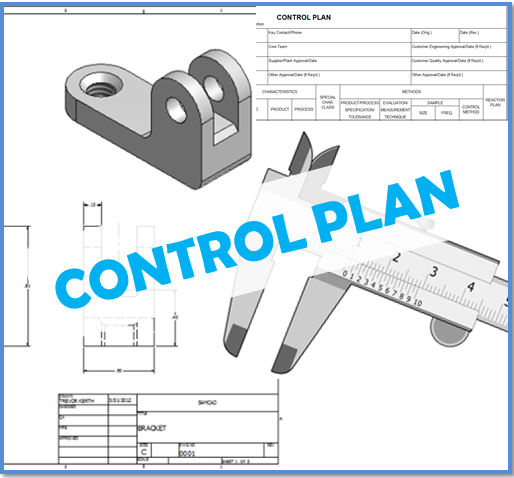Supplier Control (Incoming Inspection)
“You will not find it difficult to prove that battles, campaigns, and even wars have been won or lost primarily because of logistics” – Dwight D. Eisenhower
Social media platform like Twitter has control about the number of characters (240). Parents apply control to their children for their growth and prosperity, Legal Structure of the country provides a framework for its citizen to perform in certain boundaries,
Similarly, Supplier control is key to the success of any organization. These controls vary depending upon the criticality of the process and supplier. The criticality can be defined by conducting risk analysis. Not all suppliers need similar control and monitoring.
As per ISO 9000: 2015, following is the definition related to Supplier.
Outsource Process (Clause 3.4.6): Where an external organization performs part of an organization’s function or process. An external organization is outside the scope of the management system although the outsourced function or process is within the scope.
As per the 7th Principle of Quality Management System (ISO 9000: 2015), Relationship Management is key to the success of all interested parties. For sustained success, organizations have to manage their relationships with relevant interested parties to optimize their impact on its performance
As per ISO 9001 & IATF 16949 Standard, clause 8.4.2.1, 8.4.2.2, following are the key expectations.
- Documented Process: A documented process (procedure) has to be established wherein controls needs to be defined. The intent is to identify the outsource processes which can impact the quality of the product/service offered to the organization. Based on the risk analysis, the criticality of the product is to be identified. Once done, how to escalate or reduce the type of controls has to be defined.
Example: A supplier is supplying sheet metal components and customer complaint is observed/internal rejection at the organization end increases (more than target). In such case, may be additional process/product audit can be planned at supplier end or sample size at incoming inspection can be increased or additional verification at supplier end by the organization can be planned for the defined timeframe.
- Risk Analysis: Organization has to conduct risk analysis about its interested parties especially product/service suppliers so that customer requirement including statutory & Regulatory requirements can be met.
Example: If a supplier is supplying electroplated components to the organization which should fulfil RoHS (Restriction of Hazardous Substances) guidelines like Hexavalent Chromium, what kind of control organization can apply like demanding lab test report (designated lab) from supplier or inspection at organization end.
- Verification Activity: Once the supplier supplies their product to the organization, there can be a different kind of verification activities which can be planned. Like
- Incoming inspection/Testing by the organization on a sampling basis
- Review of Pre-Despatch Inspection report (from Supplier) by the organization
- 2nd or 3rd party assessment at supplier end before despatch
- Material testing from the approved laboratory (ISO 17025 accredited)
- Direct On Line (DOL) approval
- Effectiveness of control by supplier: Organization can plan a periodic visit at supplier end to verify, how they are applying control on their processes. It includes
- System Audit
- Process Audit
- Product audit
- 3rd party audit before despatch
- Re-approval of Machine/Process in-case of major rejection
- Quality Management System Control: As part of ensuring responsible partnership with suppliers, many times organization makes a legal agreement with their supplier. That in case of any recall/field return, if it is concluded that it is due to the supplier, in such case, they will be responsible for the financial burden.
What to do
- Identify suppliers based on significant risk to organizational sustainability if their needs and expectations are not met.
- Prioritize relationship with them based on Share of Business & criticality
- Share information, expertise and resources with relevant suppliers
- Measure performance and provide performance feedback
- Establish improvement activities
- Encourage and recognize improvements and achievements by suppliers
Key Performance Indicators:
- Quality PPM (< 100 ppm)
- Delivery Performance (100%)
- Premium Freight incidents (in Numbers and Value)
- Customer Line stoppage (Zero)
- Major Customer Quality /Delivery Failure (Customer notification from IATF subscribing OEM)
- Dealer return / Field Failure / Recall (Zero Incident)
- Certification to ISO 9001, IATF 16949, ISO 14001, ISO 45001
Performance Investigation
- Any incident of Recall or Field Failure or Dealer return
- Any incident of Customer notification
- Delivery performance is fluctuating
- Quality or Delivery performance of Critical Supplier fluctuates
- When incidents of premium freight due to Supplier increases
Possible Actions
- Detailed System Audit
- Audit of Specific Manufacturing Process where the failure occurred
- Specific Product audit from Incoming to Despatch
- Training about process/product control, Change Management etc.
- Frequency of Supplier audit based on their performance
- Share Lesson Learned from other suppliers
Benefits to Top Management
- Enhanced performance of the organization and its relevant interested parties
- A common understanding of objectives and values among interested parties
- Increased capability to create value for interested parties
- A well-managed supply chain that provides a stable flow of products and services.
Some question to ponder:
- In many organizations, there is no linkage between teams who are conducting System/Process/Product audit at supplier end and Incoming Inspection.
- In the majority of the organizations, controls are applied at supplier end without any criticality/risk analysis (same controls).
- In many organizations, the team who conducts assessment at supplier end/Incoming inspection are not competent about their processes/Legal Requirements/ELV guidelines etc.
References:
IATF 16949: 2016
iatfglobaloversight.org
ISO 9000:2015
CQI-19 Sub-Tier Supplier Management Process Guideline
This is the 43rd article of this Quality Management series. Every weekend, you will find useful information that will make your Management System journey Productive. Please share it with your colleagues too.
Your genuine feedback and response are extremely valuable. Please suggest topics for the coming weeks.



Sir
Your articles are really appreciated, I have I query in supplier audits… As per IATF requirements, auditor must be experienced with supplier specific processes, it is really difficult to meet for most of the tier 2 suppliers, who need to meet standard requirements.
Kindly advice… Regards
Dear Mr. Huzur Saran, Thanks for the response. Yes, it is a difficult requirement to fulfill but is not required?
Organization has to upgrade the skill of their employees so that they deliver the desired results.